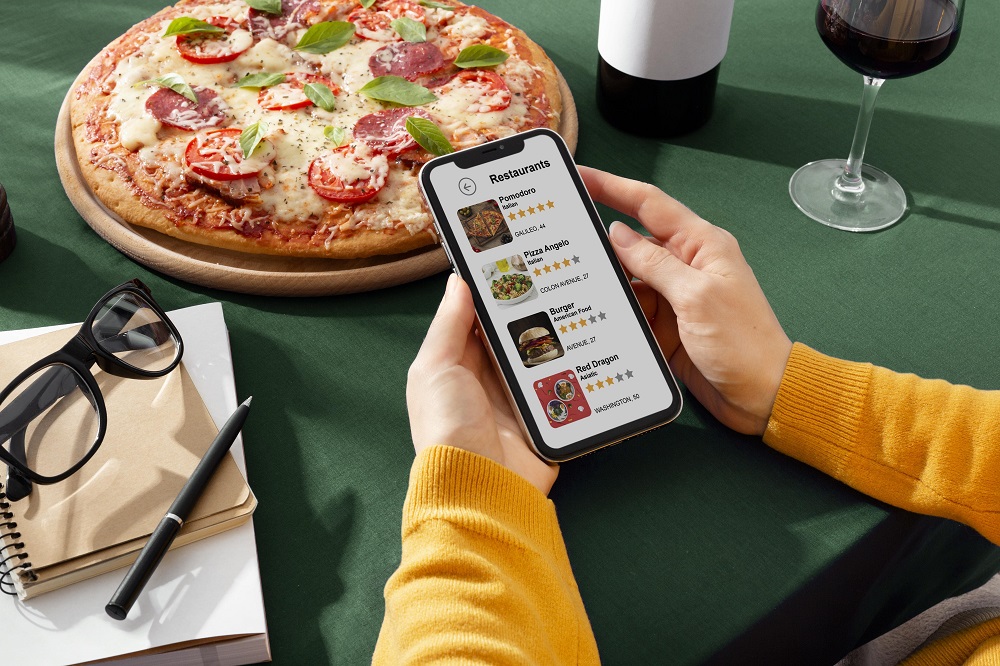In today's fast-paced world, the restaurant industry has undergone a digital transformation, making it more convenient and efficient for both customers and businesses. One of the most prominent innovations in this industry is the Mobile App for Restaurant Ordering. This technology not only enhances the dining experience but also improves the overall efficiency of restaurant operations. In this blog, we will explore the benefits and features of Mobile Apps for Restaurant Ordering, and why they are becoming an indispensable tool for the modern restaurant.
The Rise of Mobile Apps for Restaurant Ordering
With the proliferation of
smartphones and the convenience of mobile apps, restaurant owners have
recognized the need to adapt to changing consumer preferences. Mobile Apps for
Restaurant Ordering have become a powerful tool for attracting and retaining
customers, especially in the wake of the COVID-19 pandemic, which accelerated
the shift towards contactless dining.
Convenience and Efficiency
One of the primary advantages
of using a mobile app for restaurant ordering is the convenience it offers to
customers. It allows them to browse the menu, customize their orders, and make
payments from the comfort of their own smartphones. No longer do customers have
to wait in long queues, struggle with language barriers, or handle physical
menus. The convenience of placing orders at their fingertips enhances the
overall dining experience.
From a restaurant's
perspective, mobile apps streamline operations. Orders are transmitted directly
to the kitchen, reducing the chances of miscommunication. Additionally, staff
can focus on other crucial tasks, such as ensuring food quality and customer
satisfaction, rather than taking and relaying orders.
Improved Customer Engagement
Mobile apps enable restaurants
to engage with their customers more effectively. They can send personalized
promotions, loyalty rewards, and updates about special events. This not only
builds brand loyalty but also keeps customers informed and excited about what's
happening at the restaurant.
Moreover, apps allow customers
to provide feedback, which can be invaluable for restaurant owners. This
feedback loop helps them understand their customers' preferences and areas that
may need improvement, ultimately leading to a better dining experience.
Enhanced Menu Exploration
Mobile apps for restaurant
ordering provide a visually appealing and user-friendly platform for customers
to explore the menu. They can browse through high-resolution images of dishes,
read detailed descriptions, and even access reviews and ratings from other
customers. This immersive experience empowers customers to make well-informed
choices, resulting in higher satisfaction.
Real-Time Order Tracking
Another significant benefit of
mobile apps is real-time order tracking. Customers can monitor the status of
their orders from the moment they place them until they are ready for pickup or
delivery. This transparency adds a layer of assurance and keeps customers
informed about when to expect their food, reducing anxiety and wait times.
Contactless Dining
The rise of mobile apps for
restaurant ordering has coincided with the need for contactless dining
experiences due to the pandemic. Restaurants have adapted by implementing
features such as digital menus, contactless payments, and curbside pickup.
Mobile apps facilitate these contactless processes and offer peace of mind to
customers concerned about their health and safety.
Simplified Payment Options
Mobile apps make the payment
process seamless and secure. Customers can save their payment information,
allowing for quick and hassle-free transactions. This convenience encourages
repeat business, as customers are more likely to return to restaurants where
the payment process is straightforward and reliable.
Cost Reduction for Restaurants
While developing a mobile app
may have an initial investment, it can lead to cost savings in the long run. As
mentioned earlier, it streamlines operations by reducing order errors and
improving efficiency. Additionally, restaurants can reduce the need for printed
menus and the associated costs. Moreover, mobile apps can significantly reduce
the cost of employing extra staff solely for taking orders.
Competitive Advantage
Having a mobile app for
restaurant ordering can set your establishment apart from the competition.
Customers are more likely to choose a restaurant with a convenient mobile app
over one without. It signals a commitment to innovation and customer-centric
service, attracting tech-savvy customers.
Conclusion
The Mobile App
for Restaurant Ordering in Lahore is a game-changer in the restaurant
industry. Its convenience, efficiency, and engagement capabilities make it an
invaluable tool for both restaurant owners and customers. As the world becomes
increasingly digital, restaurants that adopt these technologies are more likely
to thrive and stay ahead of the competition. If you own or manage a restaurant,
consider developing a mobile app for ordering to enhance the dining experience
and boost your business in this digital age. Embracing this innovation is not
just a step forward; it's a leap into the future of dining.





Comments